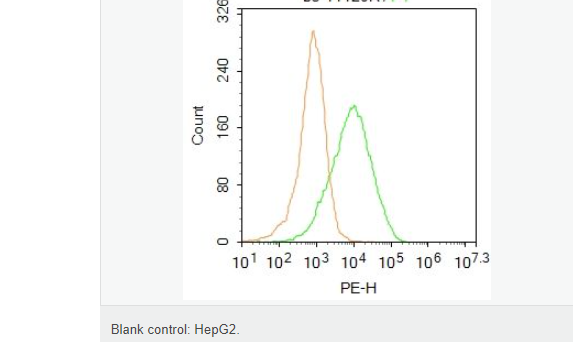
货号
产品规格
售价
备注
BN41656R-50ul
50ul
¥1486.00
交叉反应:Human,Rat 推荐应用:WB,ELISA
BN41656R-100ul
100ul
¥2360.00
交叉反应:Human,Rat 推荐应用:WB,ELISA
BN41656R-200ul
200ul
¥3490.00
交叉反应:Human,Rat 推荐应用:WB,ELISA
| 英文名称 | Caspr2 |
| 中文名称 | 轴突相关CNTP2蛋白抗体(少突胶质细胞) |
| 别 名 | Cell recognition molecule Caspr2; Cntnap2; CNTP2; CNTP2_HUMAN; Contactin-associated protein-like 2. |
| 研究领域 | 神经生物学 细胞粘附分子 |
| 抗体来源 | Rabbit |
| 克隆类型 | Polyclonal |
| 交叉反应 | Human, Rat, |
| 产品应用 | WB=1:500-2000 ELISA=1:5000-10000 Flow-Cyt=3ug/Test not yet tested in other applications. optimal dilutions/concentrations should be determined by the end user. |
| 分 子 量 | 145kDa |
| 细胞定位 | 细胞膜 |
| 性 状 | Liquid |
| 浓 度 | 1mg/ml |
| 免 疫 原 | KLH conjugated synthetic peptide derived from human Caspr2:801-900/1331 <Extracellular> |
| 亚 型 | IgG |
| 纯化方法 | affinity purified by Protein A |
| 储 存 液 | 0.01M TBS(pH7.4) with 1% BSA, 0.03% Proclin300 and 50% Glycerol. |
| 保存条件 | Shipped at 4℃. Store at -20 °C for one year. Avoid repeated freeze/thaw cycles. |
| PubMed | PubMed |
| 产品介绍 | CASPR is a transmembrane glycoprotein of the neurexin superfamily that is highly enriched in regions of myelinated axons. The axons of myelinated nerves in the adult nervous system possess specialized subcellular structures essential for efficient and rapid action potential propagation. CASPR and the closely related molecule CASPR2, a mammalian homolog of Drosophila Neurexin IV (Nrx-IV), demarcate distinct subdomains in myelinated axons. While CASPR is present at the paranodal junctions, CASPR2 is precisely colocalized with Shaker-like K+ channels in the juxtaparanodal region. CASPR2 specifically associates with Kv1.1, Kv1.2, and their Kvbeta2 subunit. CASPR family members may play a role in the local differentiation of the axon into distinct functional subdomains. Function: May play a role in the formation of functional distinct domains critical for saltatory conduction of nerve impulses in myelinated nerve fibers. Seems to demarcate the juxtaparanodal region of the axo-glial junction. Subunit: Associates with KCNA2. Subcellular Location: Membrane. Tissue Specificity: Predominantly expressed in nervous system. DISEASE: Defects in CNTNAP2 are the cause of cortical dysplasia-focal epilepsy syndrome (CDFES) [MIM:610042]. Affected individuals manifest cortical dysplasia, focal epilepsy, relative macrocephaly, and diminished deep-tendon reflexes. Intractable focal seizures begin in early childhood, after which language regression, hyperactivity, impulsive and aggressive behavior, and mental retardation develop. Genetic variations in CNTNAP2 influences susceptibility to autism type 15 (AUTS15) [MIM:612100]. Autism is a neurodevelopmental disorder characterized by disturbance in language, perception and socialization. The disorder is classically defined by a triad of limited or absent verbal communication, a lack of reciprocal social interaction or responsiveness, and restricted, stereotypical, and ritualized patterns of interests and behavior. Note=A chromosomal aberration involving CNTNAP2 is found in a patient with autism spectrum disorder. Paracentric inversion 46,XY,inv(7)(q11.22;q35). The inversion breakpoints disrupt the genes AUTS2 and CNTNAP2. Similarity: Belongs to the neurexin family. Contains 2 EGF-like domains. Contains 1 F5/8 type C domain. Contains 1 fibrinogen C-terminal domain. Contains 4 laminin G-like domains. SWISS: Q9UHC6 Gene ID: 26047 Database links: Entrez Gene: 26047 Human Entrez Gene: 66797 Mouse Omim: 604569 Human SwissProt: Q9UHC6 Human SwissProt: Q9CPW0 Mouse Unigene: 655684 Human Unigene: 440084 Mouse Important Note: This product as supplied is intended for research use only, not for use in human, therapeutic or diagnostic applications. |
